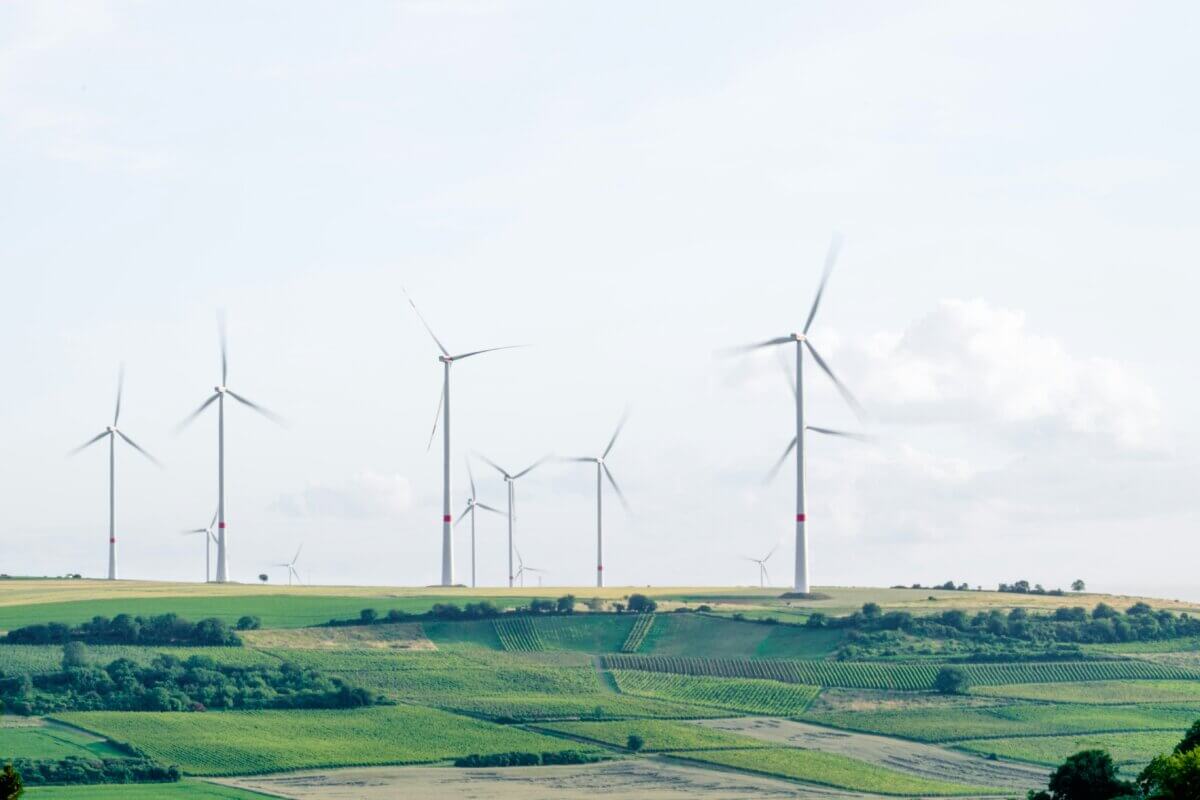EU Clean Industrial Deal and the Net-Zero Industry Act

A push for competitiveness and decarbonisation in European industry
1. A new Green Deal?
The European Union’s Clean Industrial Deal (CID), alongside the Net-Zero Industry Act (NZIA), signals a fundamental shift in European industrial policy and legislative environment. Aimed at aligning economic growth with decarbonisation ambitions, these initiatives are set to reshape the industrial landscape across Europe, and perhaps particularly in the Netherlands, where a strong industrial base intersects with ambitious climate goals.
The Clean Industrial Deal is a policy package with the aim of rebranding, and to some extent succeeding the EU Green Deal. It was first introduced by the Commission as a communication on the 26th of February 2025. The CID is purely a policy document, aiming at setting out common goals and priorities, but without a legally binding nature. The CID will need to be actualized by the adoption of regulations and directives, all of which will have to gain approval by the European Parliament and the European Council.
One of such regulations aiming at realizing the CID is the NZIA. The NZIA is a concrete regulation with legally binding effects from the 29th of June 2024. The NZIA is largely focused on boosting the competitiveness of European manufacturing, particularly of net-zero technologies and their key components. The NZIA wants to see the EU’s net-zero manufacturing meet at least 40% of the EU’s annual deployment needs by 2030. It also wishes to create a Union market for CO2 storage services, mandating an annual CO2 storage capacity of 50 million tons across the EU.
In this blogpost, we will unpack some of the core elements of these two initiatives, and asses some of the (expected) impacts on Dutch industry.
2. The Clean Industrial Deal: The new Green Deal?
At its core, the CID seeks to accelerate Europe’s transition to a low-carbon economy without sacrificing industrial competitiveness. It wants to turn decarbonization into a driver for growth instead of a hurdle. For the Netherlands, home to many energy-intensive industries (EIIs) such as chemicals, steel, and manufacturing, this translates into embracing new technologies, reducing emissions from existing installations, and transforming production models.
The CID also encourages increased financial backing for this transformation. The CID has pledged to mobilize more than EUR 100 million for the commercialization of the clean technology industry. This comes in addition to other indirect financial support measures such as additional funding for research and development, and training of a skilled workforce.
The EII sector will also be supported by updated state aid rules. We will however not further elaborate on this state aid component in this blog post.
The proposed Industrial Decarbonisation Bank stands out as a critical enabler for Dutch industry. Designed to facilitate access to finance for decarbonization projects, the bank complements existing mechanisms such as the EU’s Innovation Fund and the InvestEU framework. It opens doors for increased investment in clean technologies, as well as carbon capture and storage (CCS), hydrogen, renewable energy production, and industrial electrification.
Dutch companies historically cite high upfront costs as a barrier to adopting green technologies. The CID aims to help bridge this gap, especially in light of EU-wide carbon pricing reforms that favors cleaner production methods.
We will now go into some of the main components and goals for the CID, introducing aspects that are of particular interest to industrial parties.
2.1 Affordable and Secure Energy
A key focus of the CID is improving energy affordability and security, two vital concerns, especially for the Dutch EII.
To achieve this, the CID has introduced the Affordable Energy Action Plan (AEAP). The AEAP aims to lower energy costs, to complete the Energy Union, attract investments and to increase readiness for potential future energy crisis. However, it is important to keep in mind that just like the CID, the AEAP is purely a policy document, and can hence not introduce concrete, legally mandated actions. One of the more concrete measures taken, to lower energy (in this case electricity) prices is the Electricity Market Design Reform, reforming the Electricity Market Design Directive and Regulation. A separate blog post on the Electricity Market Design Reform will be published at a later date.
2.2 Circular Economy
The CID also restates the EU’s commitment to a more circular economy, encouraging industries to design products with longevity and recyclability in mind. The Circular Economy Action Plan, (another piece of non-binding policy), is scheduled to be revised in 2026.
This approach of circularity and reuse is especially relevant for Dutch sectors like manufacturing, automotive and electronics. Additional incentivizes for the use of secondary raw materials and promoting product lifecycle management can also be expected.
2.3 Regulatory Simplification for State Aid and Innovation Support
Another pillar of the CID is the removal of regulatory bottlenecks for clean technology. As previously mentioned, the CID proposes a more flexible state aid regime that allows Member States to more easily support clean industrial projects and scale-ups.
Increased attention and financial support will be given to innovation and research. The Innovation Fund will be supported through the creation of the beforementioned Industrial Decarbonisation Bank, aiming to add EUR 100 billion to the Innovation Fund. This amount will be partly financed by revenue from the Emission Trading System.
2.4 Securing Critical Raw Materials: A Strategic Priority
The green transition relies heavily on access to critical raw materials such as lithium, cobalt, and rare earths. The CID’s Raw Materials Strategy aims to secure and diversify these supply chains through international partnerships, collective bargaining, and increased investment in domestic refining and recycling capacity. On the basis of the CID, the Commission has been instructed to set up the EU Critical Raw Material Centre. The aim is to facilitate joint purchasing of raw materials on behalf of companies, in order to better negotiate prices and conditions. This in connection to the increased focus on reuse and recycling, will make individual Member States, and the EU as a whole, less dependent on third countries for these materials.
2.5 Increasing demand for sustainable European products
To boost demand for European made products, the CID acts as the basis for the Commission’s Industrial Decarbonization Accelerator Act, opening the door for non-price criteria to be considered in public procurement procedures. Examples of what these criteria can be are “clean”, “resilient”, “circular”, or “cyber secure”. Beyond this, the Commission is proposing to revise the public procurement framework in 2026, allowing for broader sustainability and European preference criteria to be added to procurement in strategic sectors.
2.6 Criticisms of the Clean Industrial Deal
As with all policy, there has also been more critical voices active in the discussion about the CID.
One of such criticisms is that the policy makes a visible shift from laying the focus of the decarbonization on mitigating climate change, to (under the CID) decarbonization as a tool to reach increased global competitiveness and increase the productivity of European industry. While this criticism is a relatively common one, this is (in our opinion) largely an issue of semantics. The decarbonization goal remains no matter the framing of the underlying reason. The focus on EIIs is also understandable, as the emissions from these industries amount to about 19% of the EU’s total annual emissions. EIIs also use more than half of all energy needed for European industry. These industries are particularly hard to abate but if decarbonization is achieved, this will have a large impact on cutting CO2 emissions. Therefore, more legislative and financial support is needed for these industries to reach decarbonization targets.
Some interest groups have also criticized the CID’s lack of focus on environmental pollution, wishing for a dual focus on decarbonization and detoxification of industry.
3. The relevance of the Net-Zero Industries Act as an instrument of the CID
The NZIA is a part of the actualization of the CID. The NZIA includes requirements for Member States to give increased support to Net-zero technology industries. This is done through the identification and prioritization of Net-Zero Strategic Projects. These Strategic Projects can be a net-zero technology manufacturer, or a project capturing CO2 or transporting CO2. These strategic projects can enjoy several benefits, such as reduced administrative burdens and expedited permitting processes:
| Net-zero strategic projects | Maximum duration of permit-granting process |
| With a yearly manufacturing capacity of < 1 GW | 9 months |
| With a yearly manufacturing capacity of ≥ 1 GW | 12 months |
| If manufacturing capacity cannot be measured in GW | 12 months |
| To operate a storage site | 18 months |
The projects can themselves apply for strategic project status through an online application process, opened in July 2024.
The strategic industries will be further supported through the creation of Net-Zero Acceleration Valleys. These valleys shall be specific areas designated for net-zero industrial activities. Member States shall not only designate these areas but shall also come up with national measures that increase the attractiveness of the specific location for net-zero projects wishing to establish activities there.
The NZIA also imposes new requirements for public auctions for renewable energy. In auctions for solar or wind farms, authorities must evaluate the auction’s contribution to sustainability and resilience, cybersecurity, responsible business conduct and ability to complete projects on time. These criteria must apply to at least 30% of the volume auctioned annually in each EU Member State or 6 gigawatts, respectively.
The NZIA has established the Net-Zero Europe Platform, a governance body meant to assist and facilitate discussions between the Commission and the Member States on reaching the objectives of the NZIA. This platform will also seek to engage with civil stakeholders and provide advice on financing, as well as facilitate international partnerships for the sector.
4. Conclusion: Strategic Action and Possibilities
The Clean Industrial Deal and the Net-Zero Industry Act together mark a decisive step toward a more sustainable and competitive European industry. For Dutch industry, the implications are profound: new funding opportunities, regulatory clarity and an urgent mandate to innovate.
To fully benefit, Dutch industries must remain agile, informed and proactive. Legal counsel and regulatory advisors will play an essential role in helping businesses navigate this complex transition, ensuring compliance while always identifying strategic advantages
For more insights on EU climate legislation and regulatory developments, or if you want to discuss energy related matters, please contact the Energy, Industry and Renewables Department at Van Doorne.





